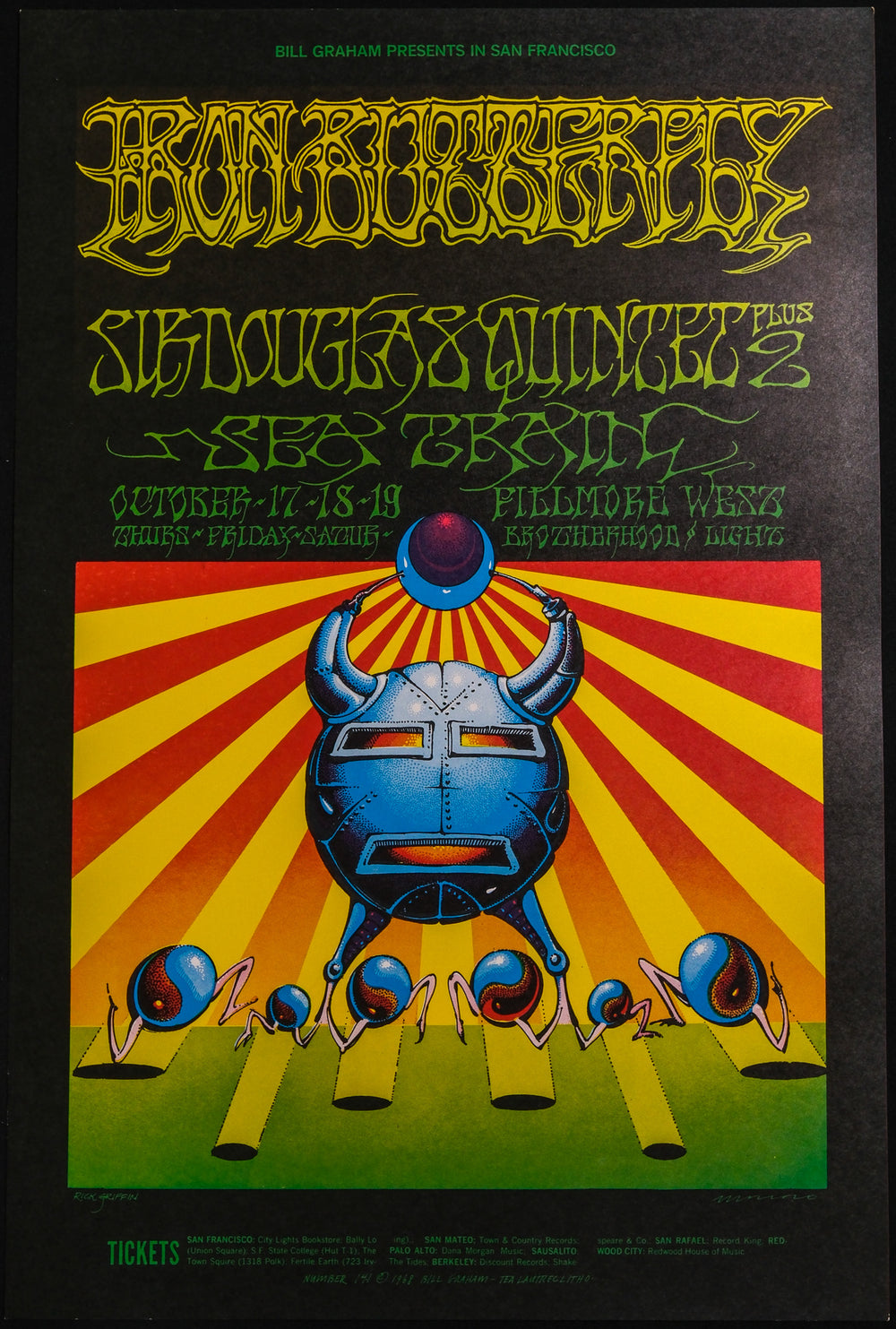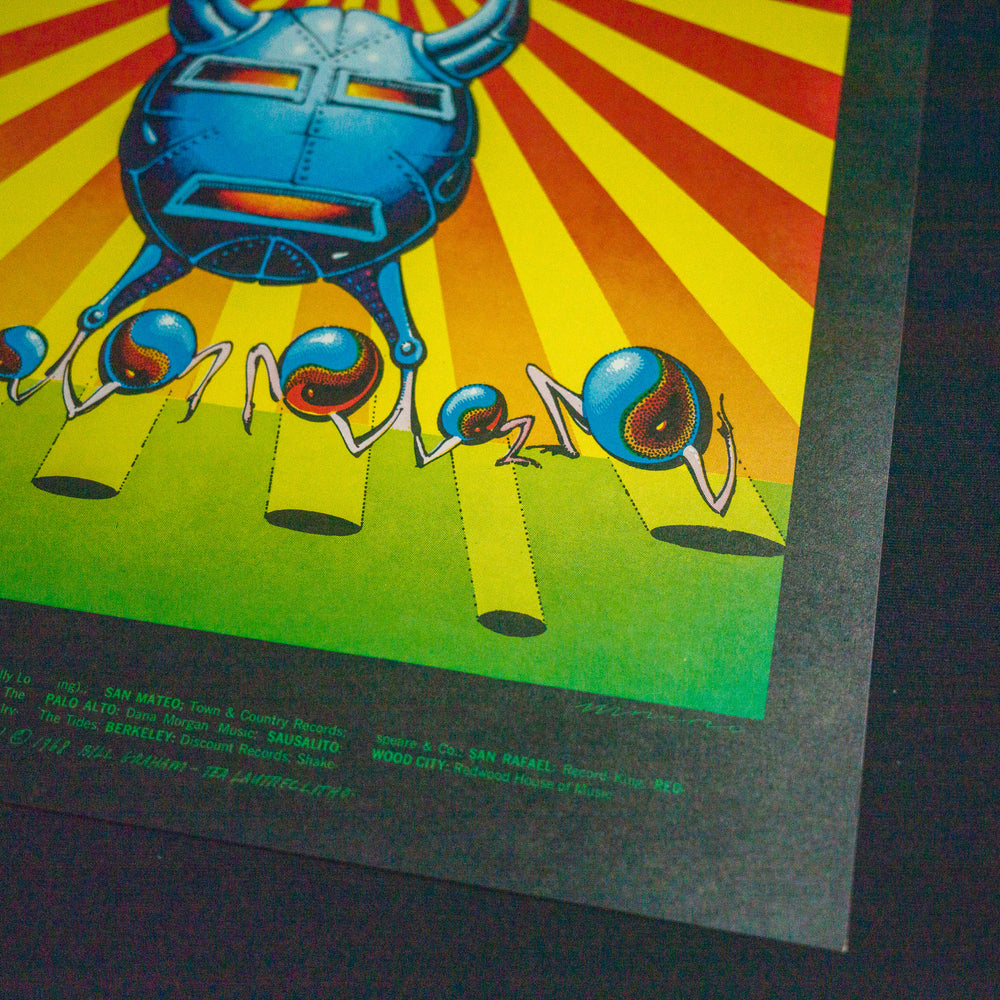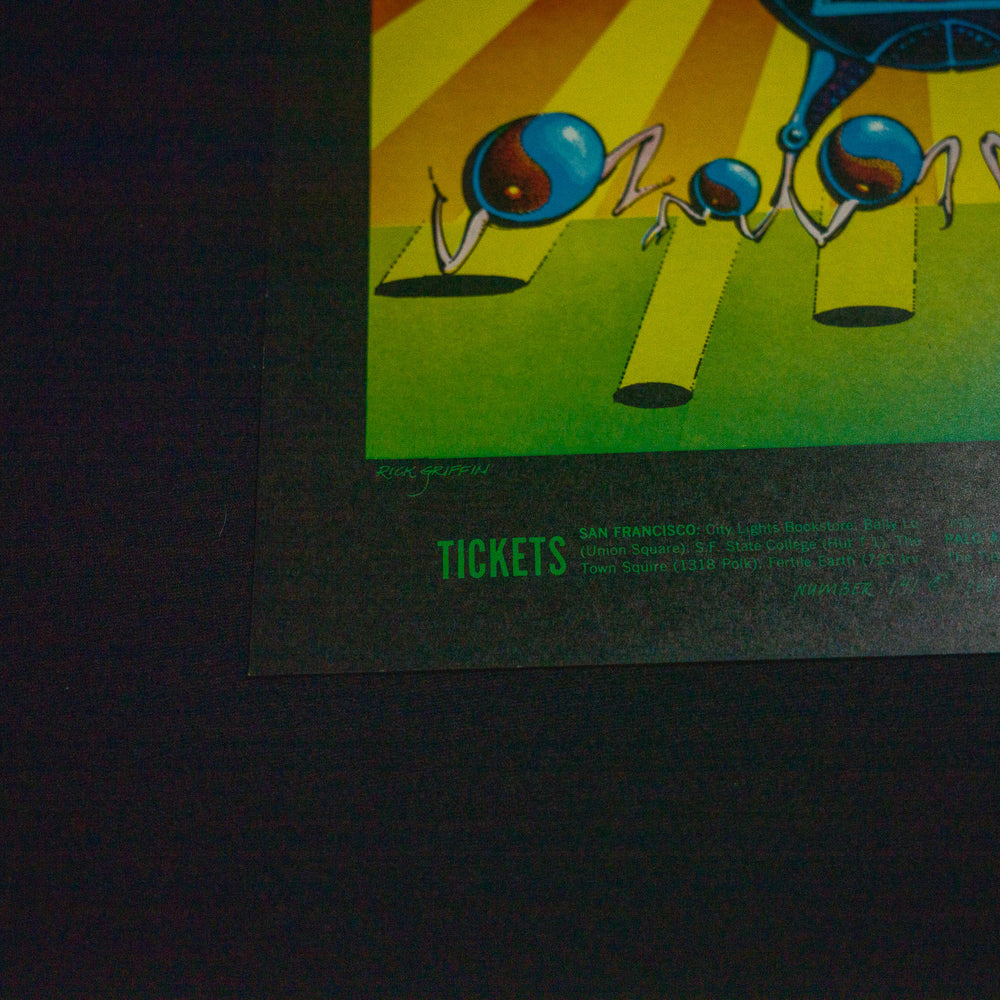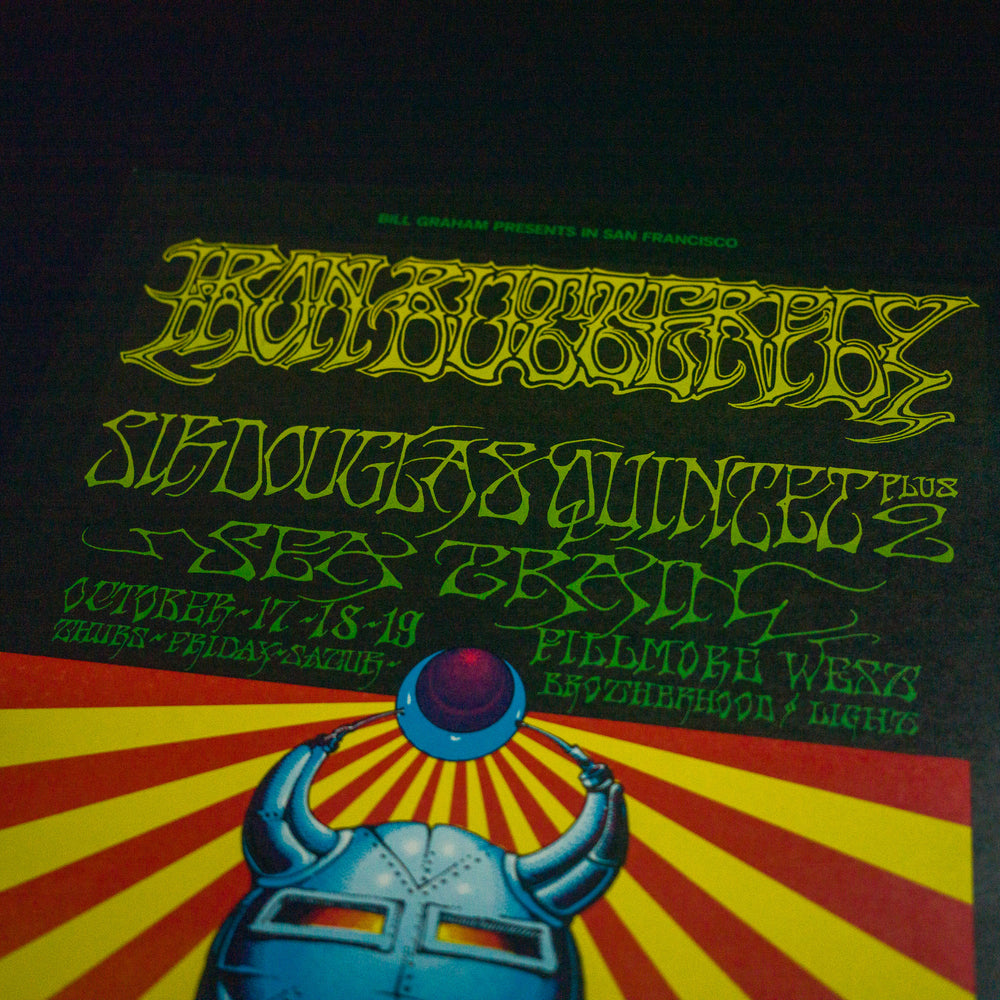Introduction
Journey back to the Summer of Love in 1968 with the enchanting poster created by legendary artist Rick Griffin for the iconic rock band Iron Butterfly's San Francisco concert. This poster is a vivid reflection of the era's musical and artistic explosion, capturing the essence of a legendary performance. Join us as we delve into the artistic brilliance of Rick Griffin, celebrated in this poster that embodies the spirit of a transformative period in rock 'n' roll history.
Key Features
- Artist: Rick Griffin Victor Moscoso
- Year: 1968
- Edition: BG-141 OP-1 NM
- Numbering: NA
- Signature: NA
- Dimensions: 14.25"x21.5"
- Material: Screen Print
- Venue: Filmore West
The Artist: Rick Griffin
Rick Griffin was a prolific and influential American artist and illustrator known for his remarkable contributions to the world of psychedelic and counterculture art. Born on June 18, 1944, in Los Angeles, California, Griffin's journey as an artist began in the 1960s and quickly established him as a prominent figure in the art scene of that era.
Griffin's distinctive artistic style was characterized by its intricate and mesmerizing lettering, surreal and intricate illustrations, and a deep affinity for the psychedelic and spiritual movements. He drew inspiration from a variety of sources, including surfing, hot rod culture, and underground comix. His work often featured intricate and otherworldly imagery that reflected the psychedelic experiences of the time.
One of Griffin's most enduring legacies is his work in creating iconic rock concert posters. He designed posters for legendary bands and artists like the Grateful Dead, Jimi Hendrix, and Jefferson Airplane, among others. These posters not only served as promotional material but also became collectible pieces of art, capturing the spirit of the music and countercultural movements of the 1960s and 1970s.
The Band: Iron Butterfly
Emerging from the vibrant San Diego music scene of the mid-1960s, Iron Butterfly soared to prominence as pioneers of psychedelic rock. Their music, characterized by its heavy riffs, extended improvisations, and exploration of altered states of consciousness, resonated with the counterculture movement, propelling them to mainstream success and establishing them as one of the most influential bands of the era.
Early Days and Experimentation
Iron Butterfly's roots can be traced back to 1966 when guitarist Erik Braunn and bassist Lee Dorman formed a band called The Wizards. They were joined by drummer Ron Bushy and organist Danny DeLoach, and the group began experimenting with a blend of blues, rock, and jazz influences.
Psychedelic Transformation and Breakthrough
In 1967, organist Doug Ingle replaced DeLoach, bringing a more psychedelic and improvisational approach to the band's sound. This lineup solidified Iron Butterfly's identity as pioneers of psychedelic rock, and their music began to garner attention within the burgeoning counterculture movement.
"In-A-Gadda-Da-Vida" and Commercial Success
In 1968, Iron Butterfly released their seminal album, "In-A-Gadda-Da-Vida," which catapulted them to mainstream success. The album's centerpiece, the monumental 17-minute title track, became an anthem for the counterculture movement, its swirling melodies, hypnotic rhythms, and extended improvisations immersing listeners in a psychedelic soundscape.
The Venue: The Fillmore West
The Fillmore West was a historic music venue located in San Francisco, California. It was one of the most iconic and influential concert halls during the heyday of the 1960s counterculture and the psychedelic rock scene. Here are some key highlights about the Fillmore West:
-
Legendary Venue: The Fillmore West was the West Coast counterpart to the famous Fillmore Auditorium, both of which were owned and operated by concert promoter Bill Graham. These venues played a pivotal role in the music and cultural revolution of the 1960s.
-
Musical Icon: Bill Graham, known for his passion and commitment to live music, transformed the Fillmore West into a premier venue for rock concerts. The venue hosted a wide array of legendary artists, including The Grateful Dead, Jimi Hendrix, Janis Joplin, Jefferson Airplane, and many others.
-
Eclectic Lineups: One of the hallmarks of the Fillmore West was its diverse and eclectic lineups. Bill Graham was known for mixing genres and showcasing both emerging and established artists. The venue was a platform for experimental and avant-garde music, helping to shape the San Francisco Sound.
-
Intimate Setting: The Fillmore West had a capacity of around 2,500, making it a relatively intimate venue compared to larger arenas. This allowed for a close connection between the performers and the audience, creating a unique concert experience.
-
Iconic Posters: The Fillmore West, like its sister venue, featured distinctive and artistic concert posters. Artists such as Wes Wilson and Rick Griffin created psychedelic and visually stunning posters that became collectible pieces of art in their own right.
-
End of an Era: Unfortunately, the Fillmore West, like many iconic venues of the 1960s, closed its doors in 1971. The music scene had evolved, and financial pressures played a role in its closure. However, the legacy of the Fillmore West lives on in the memories of those who attended its legendary concerts and through the music that was performed on its stage.




